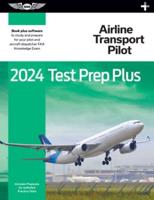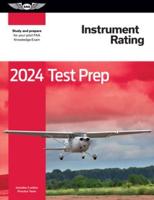Publisher's Synopsis
Predicting Failures and Measuring Remaining Equipment Life for Highly Reliable Aerospace Equipment documents the author's work as the Boeing GPS Space and Ground Segment Manager, developing and using predictive algorithms to identify premature aging in normal appearing engineering measurement telemetry from electrical and electro-mechanical equipment on U.S. Air Force GPS satellites and documented in monthly and quarterly on-orbit test reports as CDRLs and the NASA/Fairchild/U.C. Berkeley Extreme Ultra-Violet Explorer satellite, a sister ship to the NASA Hubble space telescope. Now called prognostics and health management or PHM, predictive algorithms in PHM were developed by the author and used on the U.S. Air Force's GPS Block I space-based navigation program. PHM was first used by the author starting in 1979 to predict on-board GPS satellite atomic frequency standard failures for replacement on the initial GPS constellation of MEO satellites that were operating in a 12,000 mile altitude, inclined 63 degrees, circular Earth orbit for achieving the maximum navigation system performance during multi-military service system-wide testing that would justify funding by the DoD. The 12 Boeing Block 1 GPS satellite constellation was used to win program funding by the author from the Department of Defense resulting in two follow-on contracts for Boeing for 28 additional Block II GPS satellites and 12 Block IIA satellites with improvements based on the results from the author's routine prognostic analysis he completed to improve GPS satellite equipment and payload performance and reliability. With the Air Force's GPS program funded by the DoD, the two existing, Navy satellite-based navigation and timing programs called TIMATION and TRANSIT were retired.









